2018-12-06
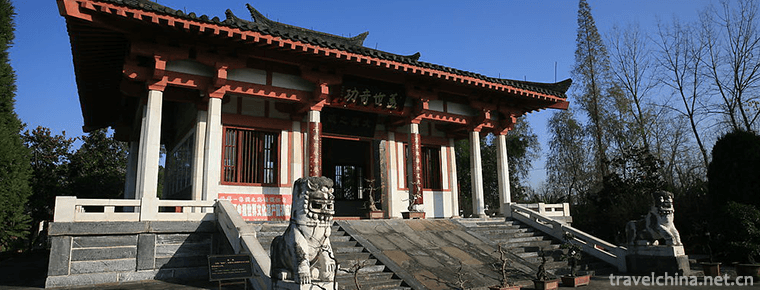
- By ChinaWiki.net
- Chinese Edition
- 2019-03-16
Tomb of Zhang Qian
Zhang Qian's tomb was the tomb of Zhang Qian, an outstanding diplomat, explorer and pioneer of the Silk Road in the Western Han Dynasty. In the third year of Emperor Yuanding of Han Dynasty (114 years ago), Zhang Qian died of illness and was buried in his hometown, Bowang Town.
Zhang Ji's tomb is situated in the north and south facing the south. It is 35.6 meters long, 20 meters wide and 5 meters high. It is covered in a bucket. In 1938, the Department of History of the National Northwest United University carried out a preliminary excavation of Zhang Qian's tomb, which was identified as the tomb of Zhang Qian, the Honorable Marquis of the Han Dynasty, with a mud seal and a stone tablet in front of the tomb and stone carvings of the Han Dynasty.
In 1956, Zhang Qian Tomb was listed as the first batch of key cultural relics protection units in Shaanxi Province. In May 2006, Zhang Qian's tomb was announced by the State Council as a national key cultural relic protection unit . On June 22, 2014, at the 38th session of UNESCO World Heritage Committee held in Doha, Qatar, Zhang Qian's Tomb was successfully listed on the World Heritage List as a site of the Silk Road: Road Network of Chang'an-Tianshan Corridor, which was jointly applied for by China, Kazakhstan and Kyrgyzstan.
Historical evolution
In the third year of Yuan Ding (114 years ago), Emperor Wudi of the Han Dynasty died of Zhang Ji's disease in Chang'an and returned to his burial place. The tomb is located in Raojiaying Village, Bowang Town, three kilometers west of Chenggu County Town, Shaanxi Province. Since the Han Dynasty, the history of the tomb has been clearly recorded.
In 1938, the National Northwest United University excavated the tomb road of Zhang Qian. The tomb was inscribed with mud seal and gray pottery pieces, earthen pots and five baht coins of Han Dynasty, which proved the authenticity of the tomb archaeologically.
architectural composition
Zhang Qian's tomb is located in Zhang Qian Memorial Hall, on the North Bank of the Hanjiang River, about three kilometers away from Chenggu County. The cemetery is situated in the north facing the south, 15 meters wide in East and west, 15 meters long in South and north, 8 meters high. It is rammed and sealed in a bucket-shaped shape with a rectangular plane. The whole cemetery covers an area of 12 mu, the ancient cypress is shady, rich and green, solemn and solemn. In front of the cemetery gate, there is a pair of stone watches made up of three parts: pestles and buckets. They are exquisite in materials, exquisite in carving, eight-edged square buckets and hollow flowers. The front of the cemetery is a Ta-style gate building. The typical architectural style of the Han Dynasty is the double eaves flying angle and the generous pattern.
Zhang Qian's tomb is surrounded by stone foundations, which are waterproof and eroded. In front of the tomb stands a pair of stone tablets and stone carvings of the Han Dynasty. The stone tablet, 182 centimeters high and 80 centimeters wide, is engraved with the inscription "Han Bowang Hou Zhang Gongqian Tomb", which was established by Bi Yuan, governor of Shaanxi Province during the Qianlong period of the Qing Dynasty. On the left is the inscription of the tombstone of the Hou of Han Bowang, which was erected by Hu Yingtaoli of Guzhi County in Guangxu, Qing Dynasty. On the right is a stele inscribed with the names of Zhang's Hou Shang.
Remains of cultural relics
Lute.
Bowang Hou seal mud 2.2 cm long, 0.4 cm thick, square, unearthed in Zhang Qian's tomb. Zhang Qian's tomb has been excavated and damaged many times in history. The remnants of cultural relics on the ground were all built by Qing Dynasty people. There is no exact archaeological basis for whether this dump of steamed bread is Zhang Qian's tomb or not.
In 1938, the archaeological Committee of the National Northwest United University excavated Zhang Qian's tomb and cleared out the mud seal inscribed with the inscription of "Hope and Wisdom". Zhang Qian was named Bowang Hou by Emperor Wudi of Han Dynasty. It is this mud seal that confirms the location of Zhang Qian's tomb.
On November 06, 2014, the large-scale exhibition "Silk Road" opened at the National Museum of China, which is the largest and highest-specification Exhibition on the Silk Road so far. Bowang Hou Feng Mud was first exhibited in public after it was unearthed in 1938.
Stone Tiger
There are two Han Dynasty stone carvings on the East and west sides of Zhang Ji's tomb. They are in the shape of "S". They have slender waist, high head and recumbent posture. The two stone carvings are similar in shape. They are made of limestone and are rough and abstract in style. They are excellent artistic creations of ancient sculptors and have high artistic value.
Two stone carvings of the Han Dynasty named Shihu and Xiongqi. Local people remember Zhang Qian and endow Shihu with mythological color: Legend has it that they were a pair of machine stones of the Weaver Maid of Tiangong when Zhang Qian made mistakes. Before liberation, these two stone Tigers had been the gods of praying for sickness and begging for rain for local people.
However, because the head and limbs of these two animals do not exist, only the trunk remains, which also makes scholars of literature and history experts and scholars dispute the name of the animal. Whether it is a tiger, a lion or a horse, the age of the Western Han Dynasty or the Eastern Han Dynasty, there is no final conclusion.
According to expert analysis, from the relatively realistic shape of the animal, it is far from the more abstract stone carvings in front of Huo Qubing's tomb in the Western Han Dynasty, so experts mostly think of the stone tiger in the Eastern Han Dynasty.
Experts said that the local people first called it Shihu, because its original place was called "Shihutian", in the "Records of Hanzhong Government" and "Records of Chenggu County", they were called "Shihu". Secondly, in the ancient mausoleum culture, tigers were gods and beasts to ward off evil spirits, protect the souls and corpses of the deceased from ghosts, especially the winged God tigers, thus proving the essence of gods and beasts as tigers. In addition, some experts believe that the carving size of the god beast in front of the tomb is close to the real tiger. In the details of the carving, it reflects realism, from which we can feel the tight waist and abdomen position of the stone tiger. The ribs are dimly visible, which makes the viewer feel the strength of the stone tiger's strong and stretching.
United Nations General Assembly Stele
In July 1938, the archaeological Committee of the Department of History of the Northwest United University carried out an additional archaeological excavation of Zhang Qian's tomb. "The original gap on the side of the tomb should be cleared slightly".
But this move attracted Zhang's descendants, who thought it was digging Zhang's ancestral grave. More than a thousand people rushed to the cemetery with hoes and red cloth wrapped around their heads. Professors eventually stopped digging and replaced it with an additional tomb road. In addition to pottery pieces and five baht coins, a seal mud with the Chinese character "Bowang" was unearthed, which confirmed the tomb to be true.
In front of Zhang Qian's tomb is a rare stone tablet engraved with the flag of the Republic of China. Professor Li Jinxi Shudan of the United Nations University described the process of the renovation and discovery. The inscription "Northwest United University" appeared many times, which is one of the few inscriptions related to the United Nations University in Chenggu today.
The renovation of Zhang Qian's tomb by Professor of the United Nations University is the most important contribution to Chenggu. It not only verifies the authenticity of Zhang Qian's tomb, but also provides an important material basis for the Silk Road to declare world cultural heritage.
Protection of cultural relics
In 1956, Zhang Qian Tomb was listed as the first batch of key cultural relics protection units in Shaanxi Province.
In 1983, the Chenggu County People's Government established a special protection agency, Zhang Qian Memorial Hall.
In May 2006, Zhang Qian's tomb was announced by the State Council as the Sixth Batch of national key cultural relics protection units.
In April 2007, after Zhang Qian's tomb was listed in the Preparatory List of Silk Road Heritage Application, Chenggu County, in accordance with the relevant standards of World Heritage, worked out a series of plans and a single work implementation plan to comprehensively protect, improve, renovate and upgrade the cultural relics, infrastructure, exhibition, greening of the museum area and the surrounding environment of Zhang Qian's tomb.
On June 22, 2014, at the 38th session of UNESCO World Heritage Committee held in Doha, Qatar, Zhang Qian's Tomb was successfully listed on the World Heritage List as a site of the Silk Road: Road Network of Chang'an-Tianshan Corridor, which was jointly applied for by China, Kazakhstan and Kyrgyzstan.
Opening Hours:
Whole week (08:00 - 17:00)
Traffic Guidelines:
Bus: Take No. 2 bus in Chenggu County.
Self-driving: Xi'an-West Han Expressway Section-Chenggu Railway Station-Orange Garden Road-Zhang Qian Memorial Tourist Special Line Road-Terminus
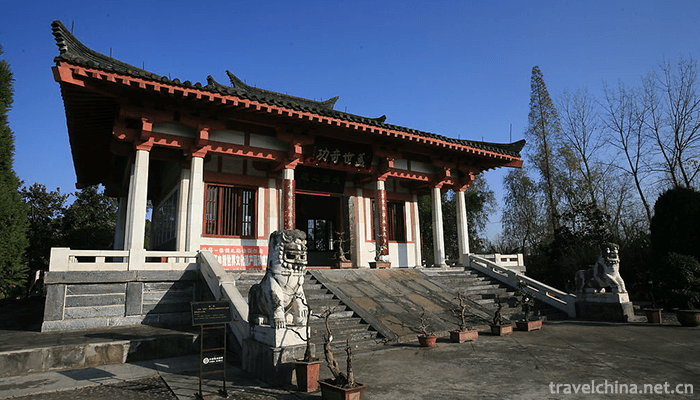
Ask a Question
Your email address will not be published.
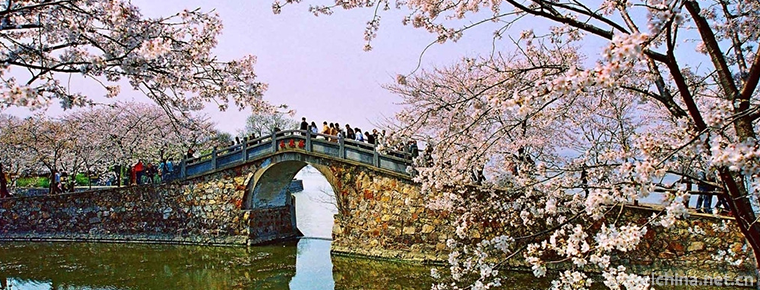
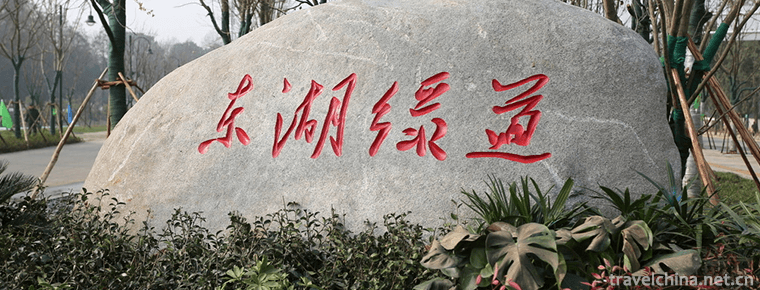
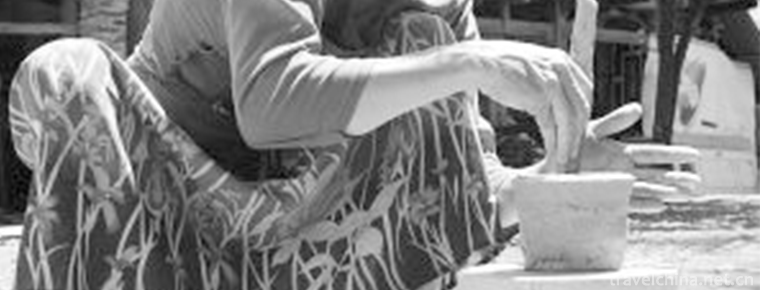
0 Questions